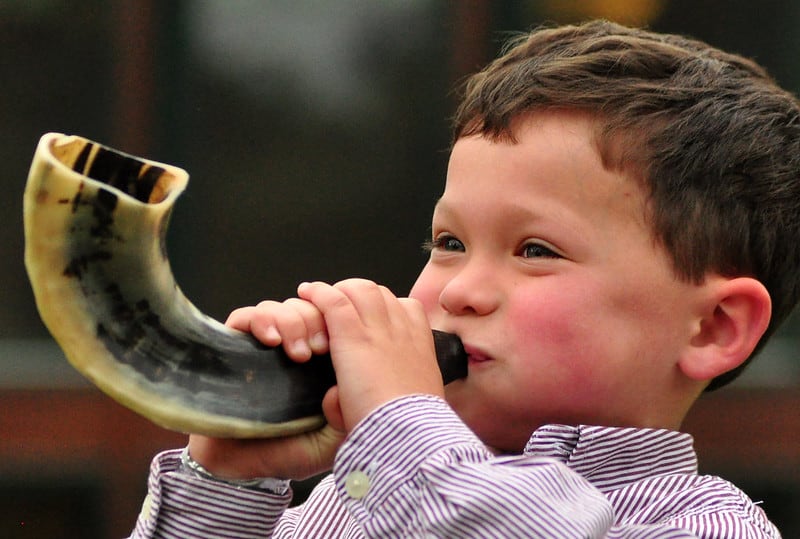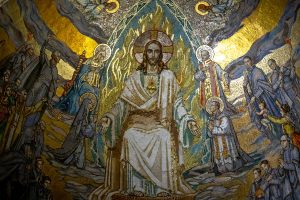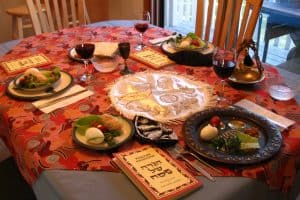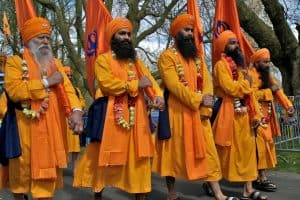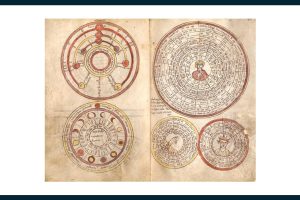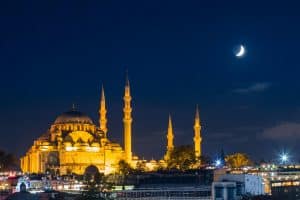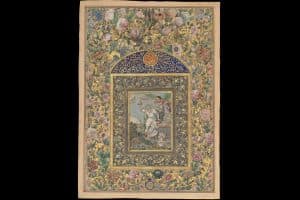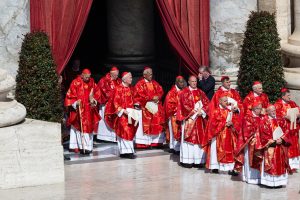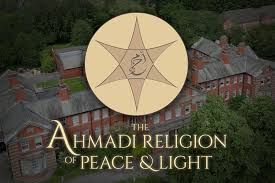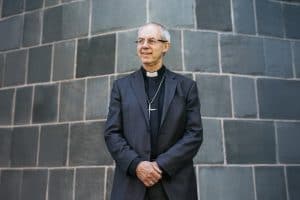By Ruby Forrester
Rosh Hashanah — Hebrew for head of year — is celebrated this weekend. It is one of the holiest holidays within Judaism and celebrates the start of the Jewish New Year. During this holiday, Jews are encouraged to reflect on the previous year and prepare for new beginnings
What does Rosh Hashanah commemorate?
Rosh Hashanah commemorates the Jewish new year and is the first celebration in the Jewish High Holy Days, otherwise known as Yamim Noraim or the Days of Awe. Starting with Rosh Hashanah and ending 10 days later with Yom Kippur, the high holy days represent an opportunity for reflection and atonement (teshuvah) as Jews enter the new year. This period encourages Jews to reflect on the previous year and prepare for new spiritual beginnings in the year ahead.
When is Rosh Hashanah?
In 2023, it falls on the weekend of 15-17 September. Celebrations begin at sunset on the first day of Tishrei, which is the first month of the lunisolar Hebrew calendar’s civil year and the seventh month of its religious year. According to the Gregorian calendar, Tishrei typically falls between mid-September and the beginning of October. Rosh Hashanah is celebrated 163 days after the first day of Passover (Pesach). However, solar calendar changes mean the specific date changes each year.
For Orthodox Jews, Rosh Hashanah celebrations traditionally last two days, whereas more Liberal Jews commonly carry out celebrations across one day. The time variations are primarily down to when they believe the blowing of the shofar — an ancient musical ram’s horn — can take place.
Rosh Hashanah occasionally falls on the Sabbath, or Shabbat. Orthodox Jews believe the shofar cannot be sounded then and therefore celebrations must be spread across two days for the shofar to be used appropriately.
How is Rosh Hashanah celebrated?
- The shofar, commonly made from a ram’s horn, is blown 100 times during a Rosh Hashanah synagogue service and is used to remind Jews to confront their decisions of the past year and return their focus to God — key themes of teshuvah. Many Jews use shofars in their homes.
- Jewish families host large dinners and serve ritual food relating specifically to the traditions and themes of Rosh Hashanah. Some served during this holiday include apples with honey (to represent having a sweet new year), pomegranate seeds (to represent the many commandments in the Torah), and round challah bread dipped in honey instead of salt (to symbolise the eternal cycle of life).
- Rosh Hashanah synagogue services are known for being extravagant celebrations that draw parallels to the royal celebrations in ancient kingdoms. The services include elaborate prayers, some of which start with a musical theme (Nusah) and some that are more silent (Amidah). Unetanah Tokef is a popular religious poem recited multiple times throughout the services during the high holiday season and was considered by the scholar and author Rabbi Dr Reuven Hammer to be “the pinnacle of the Rosh Hashanah liturgy”. Although the poem is rooted in Jewish apocalyptic literature, the subject is not about eternal judgment but focused on yearly judgment. This is representative of Jews atoning for their decisions over the past year and preparing for new spiritual beginnings in the upcoming year.
- Another ritual during Rosh Hashanah is Tashlich, which traditionally occurs in the afternoon and involves Jews gathering and reciting religious verses while throwing crumbs into a body of water. This represents the casting of Jewish sins and, although it was not officially a part of celebrations until the medieval era, it is popular today.
History
The origins of Rosh Hashanah are unclear because it is not mentioned by name in the Torah, the first five books of the Hebrew Bible. However, Leviticus 23:24 refers to a sacred occasion that occurs in the same month: “On the first day of the seventh month you are to have a day of sabbath rest, a sacred assembly commemorated with trumpet blasts.” The earliest rabbinic reference to Rosh Hashanah can be found in a Jewish legal text, Mishnah, dating about 200AD.
In October 2022, the US President Joe Biden hosted Rosh Hashanah celebrations in the White House for the first time.
Useful links
One example of a modern Jewish vlog about Rosh Hashanah
Rosh Hashanah prayer services
Ritual foods eaten at Rosh Hashanah
When is Rosh Hashanah?

